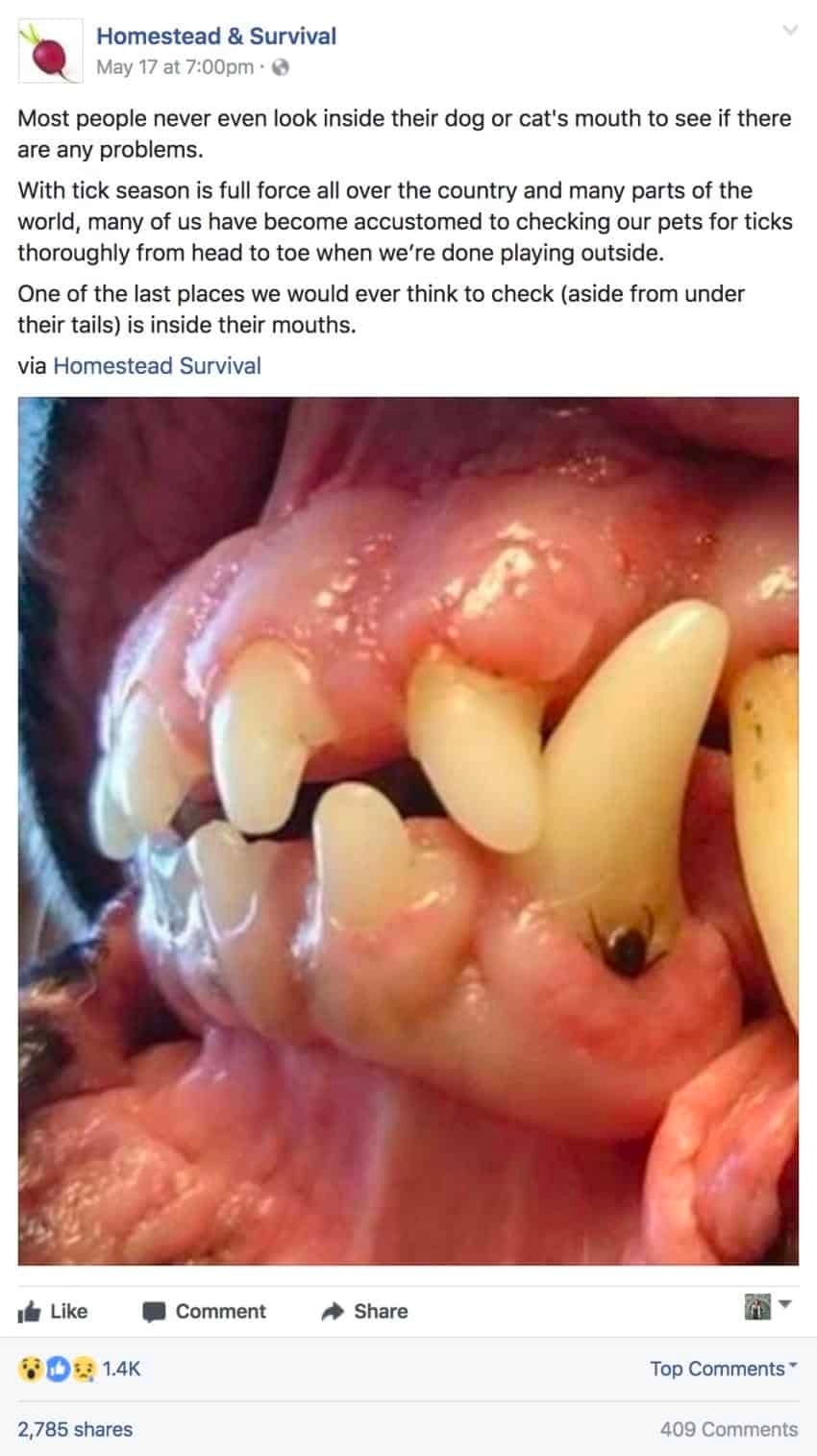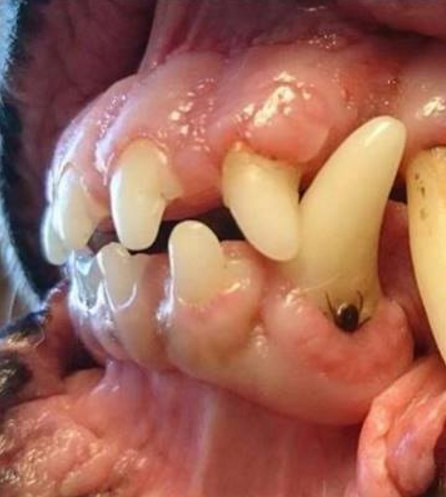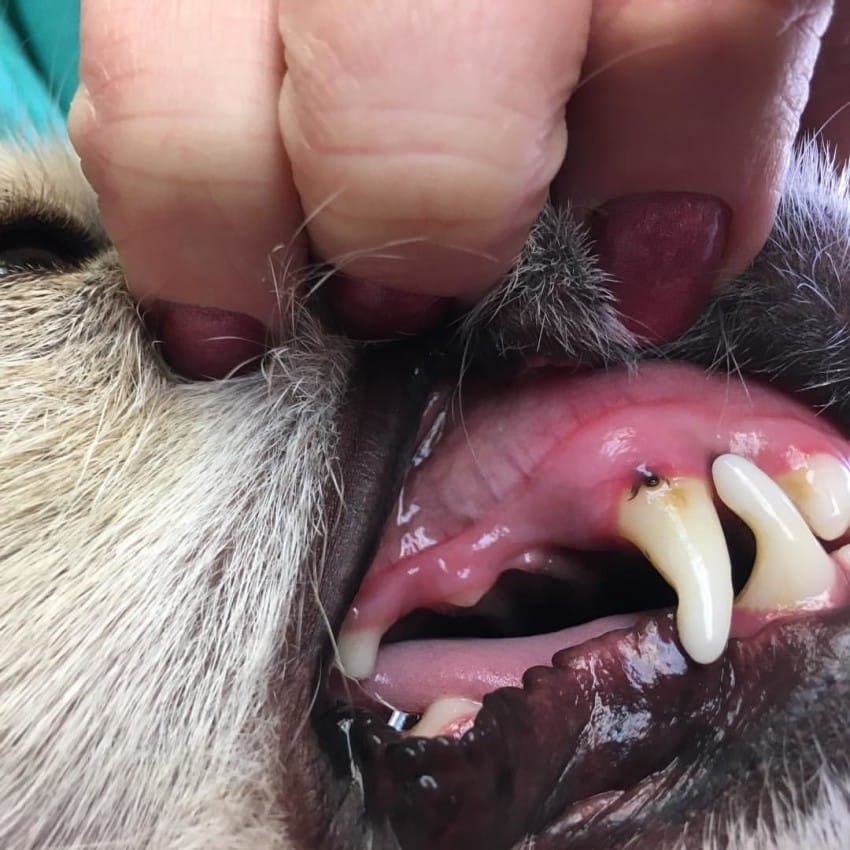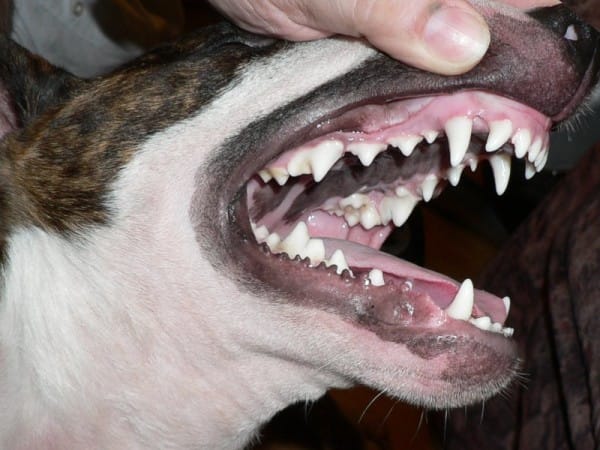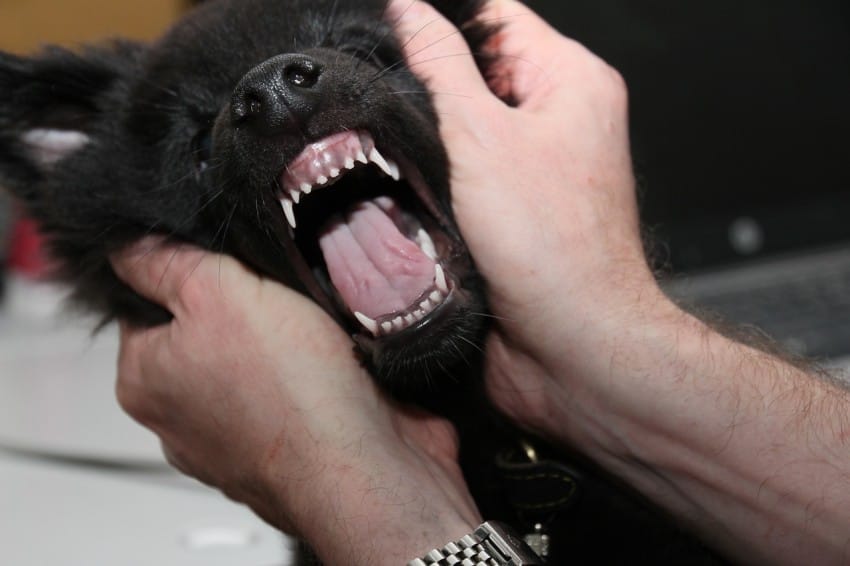When the summer rolls around, most people flock outdoors. Whether it’s to the local pool, a neighbourhood park, or to the woods for a hike, summer is the perfect time to get into nature.
After spending a lot of time outside, especially in areas with a lot of foliage, most people know they should spend some time checking for ticks.
And anyone who has dogs knows how important it is to regularly check your dog for ticks, as well. Unlike human skin, they’re harder to spot on a dog, so you have to feel for them.
Checking your dog’s entire body for ticks isn’t the most fun, particularly when you have to check under their tails and around their “private” areas.
But there’s one area most dog owner’s don’t think to check: their mouths.
It might surprise you, but since dogs smell and taste things when they’re outside, they can easily get ticks in their mouths.
Here’s what you need to know.
A photo on the Facebook page Homestead & Survival is garnering a lot of attention, and for good reason.
The picture, which shows a tick inside a dog’s mouth, has over 1,400 reactions and over 2,700 shares.
Along with the photo, the post said:
Most people never even look inside their dog or cat’s mouth to see if there are any problems.
With tick season in full force all over the country and many parts of the world, many of us have become accustomed to checking our pets for ticks thoroughly from head to toe when we’re done playing outside.
One of the last places we would ever think to check (aside from under their tails) is inside their mouths.
These little insects can be tricky to spot because they often manage to wriggle into tiny gaps between the teeth and the gums.
If you don’t spot ticks latched obviously onto your pup’s gums or cheeks, be sure to check for anything that looks like food caught in the teeth.
In some cases, these dark splotches are actually well-concealed ticks.
Australia’s Adelaide Vet explains that you should do an at-home dental exam on your dog every month.
But if you and your dog spend a lot of time outside during tick-heavy months, you should check more often.
Removing a tick from your dog’s mouth might be slightly more difficult than a different area of the body, especially if your dog isn’t comfortable with you touching their mouth.
The American Kennel Club explains that the best way to remove a tick from your dog is by using fine-point tweezers.
Once you locate the tick, grasp it as close to the skin as possible.
Then, pull gently using the tweezers.
Make sure to pull directly upward, away from where the tick was burrowing.
If you or your dog isn’t comfortable with this, have it done by your veterinarian.
The American Kennel Club also explains that you should never remove a tick using your fingers.
Not only will it not work, it may also squeeze more infectious material into your dog.
Once you’ve removed the tick, wash your hands and clean the site with rubbing alcohol.
Have you ever found a tick on your dog? It’s not a fun experience, but removing it is a good way to know you’re keeping your dog happy and healthy.
If you know someone who might like this, please click “Share!”
MUST SEE

